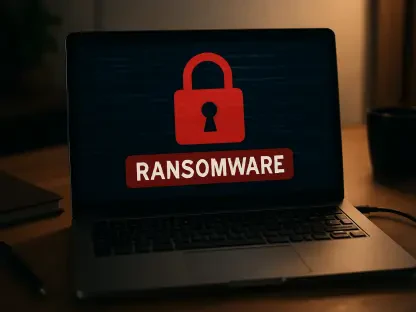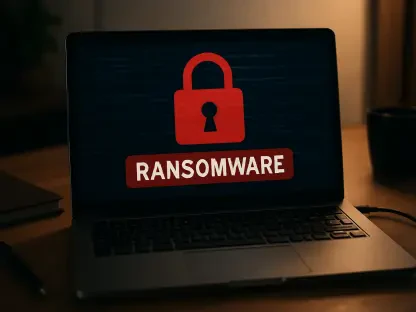The digital landscape of Brazil faces a mounting threat as a staggering 10,000 systems have fallen victim to a cunning piece of malware known as the Eternidade Trojan, spreading rapidly through WhatsApp. This malicious software, blending social engineering with technical sophistication, targets personal contacts with tailored phishing messages, exploiting a platform integral to daily communication. This roundup delves into diverse perspectives from cybersecurity experts, industry analysts, and tech researchers to unpack how this Trojan propagates, its unique design, and the broader implications for digital security. The purpose is to synthesize varying insights and provide a comprehensive view of this localized yet potent cyber threat, equipping readers with actionable knowledge to navigate such risks.
Diverse Perspectives on Eternidade’s Propagation Tactics
Social Engineering as a Core Strategy
Cybersecurity professionals emphasize the Trojan’s reliance on social engineering as a primary method of spread. Unlike broader malware campaigns that cast a wide net, this threat meticulously targets personal WhatsApp contacts with customized messages, often incorporating the recipient’s name and time-specific greetings in Portuguese. This personalization fosters a false sense of trust, significantly increasing the likelihood of users clicking on malicious links or downloading harmful files.
Some analysts point out that the focus on individual contacts rather than group chats or business accounts is a deliberate tactic to exploit personal relationships. This approach capitalizes on human psychology, where familiarity often overrides suspicion. There is growing concern among experts that such hyper-personalized attacks challenge traditional security measures, sparking debate on whether user education or enhanced software defenses should take precedence in combating these threats.
A contrasting viewpoint from behavioral security researchers suggests that while user awareness is critical, the emotional pull of receiving a message from a trusted contact can often bypass even well-informed caution. They argue for integrating more proactive alerts within messaging platforms to flag suspicious activity before users engage with potential threats, highlighting a need for technological intervention alongside education.
Technical Sophistication in Targeting
Industry observers note the dual nature of Eternidade, combining a self-replicating worm for distribution with a credential-stealing Trojan for data theft. The worm component automatically forwards itself to a victim’s contacts via WhatsApp, while the Trojan conducts rigorous checks to ensure it only activates on suitable targets, such as verifying Brazilian Portuguese language settings and avoiding corporate networks or security sandboxes.
A segment of tech researchers highlights the precision of these validations as a competitive edge over less discerning malware. This surgical approach minimizes detection risks and maximizes impact on individual Brazilian users, particularly those accessing financial services. The consensus among these experts is that such targeted design poses a significant challenge to standard antivirus tools, which often struggle to adapt to highly specific threats.
On the other hand, some malware analysts caution that this level of sophistication could inspire copycat threats with similar selective mechanisms. They stress that the real-world impact, especially on banking credential theft, underscores a pressing need for localized threat intelligence to keep pace with such evolving dangers, advocating for region-specific cybersecurity frameworks to counter these precise attacks.
Cultural and Regional Factors in Malware Design
Leveraging Brazil’s Unique Digital Landscape
Many cybersecurity experts agree that Eternidade’s design is deeply rooted in Brazil’s distinct cultural and technological environment. As the only Portuguese-speaking country in Latin America, Brazil presents a unique target demographic, which the malware exploits through language-specific phishing messages. Additionally, the use of Delphi—a programming language largely outdated globally but still taught in local IT programs—reflects how regional educational trends influence cybercrime tools.
A differing perspective from regional tech historians points out that Delphi’s simplicity aids local attackers in tasks like data exfiltration, despite its limitations for complex operations. This choice demonstrates that outdated tools can still be effective when paired with cultural familiarity, challenging the assumption that modern programming languages are always superior in cybercrime. Such insights reveal how localized knowledge can amplify a threat’s potency within a specific geographic area.
Some industry voices express concern that this cultural tailoring could set a precedent for similar malware in other regions with distinct linguistic or educational quirks. They suggest that global cybersecurity strategies must account for these regional nuances, pushing for collaborative efforts to map and mitigate threats that leverage local contexts, rather than relying solely on universal defense models.
Resilience Through Command-and-Control Innovation
Experts in malware infrastructure are particularly intrigued by Eternidade’s command-and-control (C2) adaptability, which uses an attacker-controlled email to dynamically update domains and evade takedowns. This mechanism ensures the malware remains operational even if initial servers are shut down, showcasing a level of resilience not commonly seen in many other threats.
A contrasting opinion from network security specialists compares this email-based C2 tactic to more traditional methods, noting its rarity and potential to inspire similar innovations in other malware strains. They argue that this adaptability hints at a long-term strategy by attackers to outmaneuver global cybersecurity efforts, raising alarms about the scalability of such techniques across different platforms and regions.
Another group of analysts focuses on the operational continuity this feature provides, suggesting that it complicates efforts to neutralize the threat. Their viewpoint underscores the importance of developing advanced tracking systems to monitor and disrupt these dynamic C2 communications, urging a shift in defensive priorities to address such innovative persistence mechanisms in malware campaigns.
Practical Tips and Strategies from the Field
Veteran cybersecurity practitioners offer a range of actionable advice for WhatsApp users to guard against threats like Eternidade. A common recommendation is to scrutinize unexpected messages, even from known contacts, and avoid downloading files or clicking links that seem out of character. Enabling two-factor authentication on financial apps is also widely advised as an additional layer of protection against credential theft.
Diverging slightly, some mobile security experts stress the importance of keeping security software updated to detect and block emerging threats. They also encourage users to report suspicious messages to both the messaging platform and local cybersecurity authorities, creating a feedback loop that can help track and mitigate widespread campaigns. This proactive reporting is seen as a critical step in building community resilience against such malware.
A unique angle from user experience researchers highlights the need for intuitive design changes in apps like WhatsApp to flag potential phishing attempts automatically. Their tip focuses on reducing the cognitive load on users by embedding warning systems within the platform, complementing individual vigilance with systemic safeguards to address the human error factor exploited by such threats.
Reflecting on Key Takeaways and Next Steps
Looking back, the roundup of insights on the Eternidade Trojan revealed a complex threat that intertwines social engineering with technical precision, deeply embedded in Brazil’s cultural context. Experts across various fields provided a multifaceted understanding, from the personalized deception tactics and sophisticated targeting mechanisms to the innovative C2 resilience and regional design influences. Their diverse perspectives painted a picture of a malware that challenges conventional defenses through both human and technological exploitation.
Moving forward, a critical next step involves fostering greater collaboration between global and local cybersecurity entities to develop adaptive defenses tailored to regional threats. Investing in user education programs that highlight the risks of personalized phishing, alongside advancements in platform security features, emerged as a dual priority. Additionally, exploring predictive threat intelligence to anticipate malware evolution—especially with hints of multiplatform expansion—stood out as a vital consideration to stay ahead of such dynamic dangers, ensuring safer digital environments for all.









